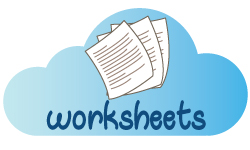Conjunction and its Types - Explained with Examples
- Grammar Lessons >
- Conjunctions
What Is a Conjunction?
A conjunction is a word that connects words, phrases, or clauses in a sentence.
Examples:
and, but, while, although.
Example sentences with conjunctions:
Alex and Ana are neighbors.
The conjunction "and" connects the two words: Alex and Ana.
We will watch the movie at home or at the cinema.
The conjunction "or" connects the two phrases: at home and at the cinema.
Although it was raining, we chose to play outside.
The conjunction "although" connects the two clauses: "It was raining" and "we chose to play outside".
Types of Conjunctions
In English, there are mainly three types of conjunctions: coordinating conjunctions, subordinating conjunctions, and correlative conjunctions. We are now going to take a closer look at each of the three types.
Coordinating conjunctions
A coordinating conjunction is a conjunction used to join words, phrases, or independent clauses in a sentence. The coordinating conjunctions are for, and, nor, but, or, yet, and so. If you have difficulty memorizing coordinating conjunctions, just remember the mnemonic "FANBOYS" and you can recall the seven coordinating conjunctions one after another.
Examples:
for, and, but, or
Example sentences:
The meal was healthy and delicious.
The conjunction "and" links the two words: healthy and delicious.The meal was well-cooked and highly nutritious.
The conjunction "and" link the two phrases: well-cooked and highly nutritious.Grandma prepared us dinner today, and it was yummy.
The conjunction "and" links the two independent clauses: "Grandma prepared us dinner today" and "it was yummy".Subordinating conjunctions
A subordinating conjunction is a conjunction used to link a dependent clause (a subordinate clause) to an independent clause (the main clause).
Examples:
when, because, although, since
Example sentence:
When the work was completed, we went home.
The subordinating conjunction "when" links the dependent clause "The work was completed" to the independent clause "We went home".Correlative conjunctions
A correlative conjunction is a conjunction that comes in a pair and links words, phrases, or clauses in a sentence.
Examples:
not only/ but also, either/or, neither/nor
Example sentences:
Kevin skipped not only breakfast but also lunch.
The correlative conjunction "not only/but also" links the two words: breakfast and lunch.The ride is not only one that thrills us but also one that is good value for money.
The correlative conjunction "not only/but also" links the two phrases: "one that thrills us" and "one that is good value for money".Not only did Sandra pass the exam with flying colors, but she also made the entire school proud.
The correlative conjunction "not only/but also" links the two independent clauses: "Sandra passed the exam with flying colors" and "she made the entire school proud".
Click on the Circles to Spot the Six Conjunctions
Conjunctions Modified by Adverbs
There are some subordinating conjunctions that can be modified by adverbs.
Example sentences:
The power failed just when Matt had finished doing the assignment.
Here, the adverb just modifies the conjunction when.
Ever since the new teacher came, our grades have been going up tremendously.
Here, the adverb ever modifies the conjunction since.
Conjunctions for Listing
Conjunctions are used while we make a list of things we are talking about.
Examples:
We have visited China, France, and Italy.
Dad loves traveling, cooking, and reading.
The Oxford Comma
The Oxford comma or serial comma is the comma we use just before we end a list of things. Although there is difference of opinion in using the Oxford comma, it's better to use it in academic writing to avoid confusion.
Examples:
I bought vegetables, fruits, and meat (with the Oxford comma, recommended)
I bought vegetables, fruits and meat (without the Oxford comma, not recommended)
However, there are instances when not using the Oxford comma can cause strange misunderstandings.
Examples:
I took a photograph of my parents, the president, and the vice president. (with the Oxford comma)
I took a photograph of my parents, the president and the vice president. (without the Oxford comma)
The second version, the one without the Oxford comma is confusing. Without the comma, I am taking a picture of two people, my parents who are the president and the vice president. With a comma, I am taking a picture of four people (my parents, the president, and the vice president).
Parallelism with Conjunctions
While using a conjunction, it's important that the different parts that it connects are parallel to each other. This is called the parallelism or the parallel structure.
Example:
John progressed slowly yet was steady. (not parallel)
John progressed slowly yet steadily. (parallel)
In the first sentence, the two parts: "progressed slowly" and "was steady" are not parallel to each other, so the sentence is incorrect.
In the second sentence, however, the two parts: slowly and steadily are parallel to each other, so the sentence is correct.
More Examples:
Kiara is educated, intelligent, thoughtful, and has lots of money. (incorrect)
Kiara is educated, intelligent, thoughtful, and rich. (correct)
The national team consists of players who have played atleast for ten years, who have represented the country twice before, and whose age is less than 30. (incorrect)
The national team consists of people who have played atleast for ten years, who have represented the country twice before, and who have not turned 30 or above. (correct)
Take a Conjunction Quiz Now!

Boost your skills using our free printable Conjunction Worksheets.

